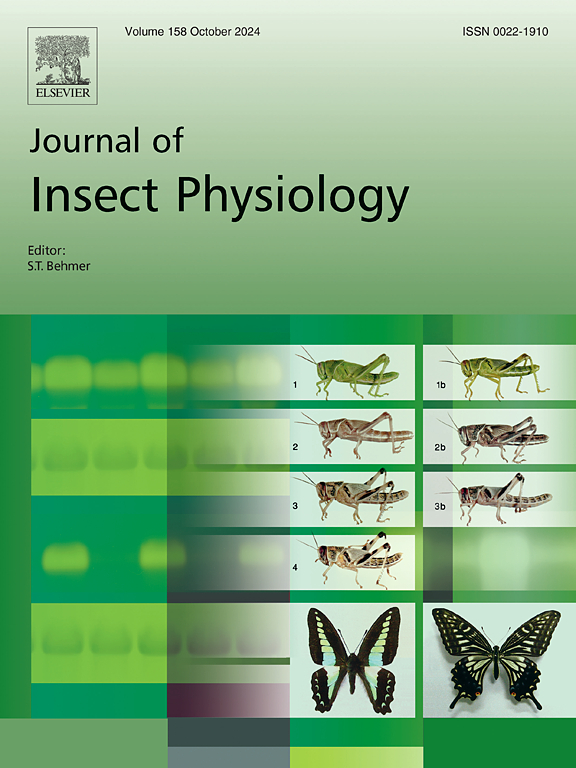Evidence for a command neuron controlling calling song in the cricket Gryllus assimilis
IF 2.3
2区 农林科学
Q1 ENTOMOLOGY
引用次数: 0
Abstract
In invertebrates stereotypical behaviours may be controlled by command neurons. In the field cricket Gryllus bimaculatus a command neuron descending from the brain controls the generation of rhythmic wing movements underlying calling song. We analysed if a corresponding command neuron also exists in other cricket species. Our intracellular recording and stimulation experiments point to a putative command neuron for calling song in G. assimilis, although the structure of the neuron could not be revealed. When this neuron was depolarised to generate 50 AP/s the cricket raised its forewings into singing position, it started rhythmic wing movements and produced the typical species-specific calling song. Further enhancing the spike rate of the neuron increased the chirp repetition rate but not the pulse repetition rate. Blocking the spike activity of the neuron by hyperpolarizing current injection reduced the chirp repetition rate and could terminate singing activity. Our evidence indicates that the two species, G. assimilis and G. bimaculatus, have homologous neurons for controlling calling song, which may be a conserved phenotype across cricket species.

蟋蟀体内控制鸣叫的指令神经元的证据
在无脊椎动物中,刻板行为可能是由指令神经元控制的。在野地蟋蟀中,一个从大脑中下行的指令神经元控制着鸣叫背后有节奏的翅膀运动的产生。我们分析了在其他蟋蟀物种中是否也存在相应的命令神经元。我们的细胞内记录和刺激实验表明,尽管无法揭示神经元的结构,但在G. assimilis中可能存在一个用于鸣叫的命令神经元。当这个神经元去极化,产生50个AP/s时,蟋蟀抬起它的前翅进入唱歌的姿势,它开始有节奏的翅膀运动,发出典型的物种特有的鸣叫。进一步提高神经元的尖峰率增加了啁啾重复率,但没有增加脉冲重复率。通过注射超极化电流阻断神经元的尖峰活动可降低啁啾重复率,并可终止鸣叫活动。我们的证据表明,G. assimilis和G. bimaculatus这两个物种具有同源的神经元来控制鸣叫,这可能是一种保守的表型。
本文章由计算机程序翻译,如有差异,请以英文原文为准。
求助全文
约1分钟内获得全文
求助全文
来源期刊

Journal of insect physiology
生物-昆虫学
CiteScore
4.50
自引率
4.50%
发文量
77
审稿时长
57 days
期刊介绍:
All aspects of insect physiology are published in this journal which will also accept papers on the physiology of other arthropods, if the referees consider the work to be of general interest. The coverage includes endocrinology (in relation to moulting, reproduction and metabolism), pheromones, neurobiology (cellular, integrative and developmental), physiological pharmacology, nutrition (food selection, digestion and absorption), homeostasis, excretion, reproduction and behaviour. Papers covering functional genomics and molecular approaches to physiological problems will also be included. Communications on structure and applied entomology can be published if the subject matter has an explicit bearing on the physiology of arthropods. Review articles and novel method papers are also welcomed.
 求助内容:
求助内容: 应助结果提醒方式:
应助结果提醒方式:


